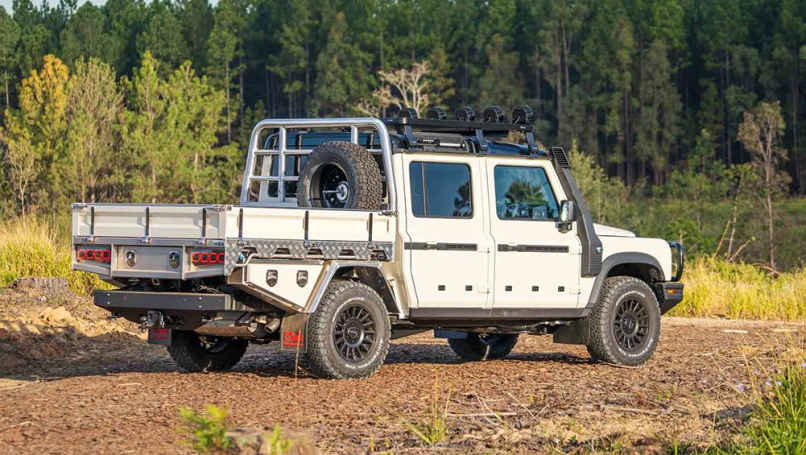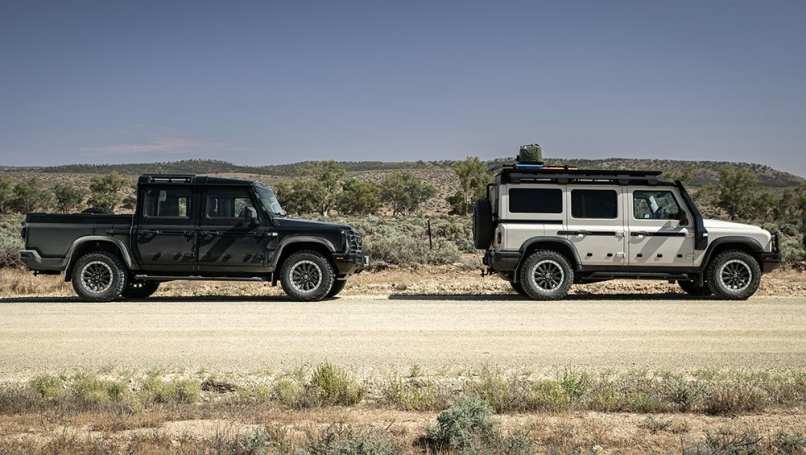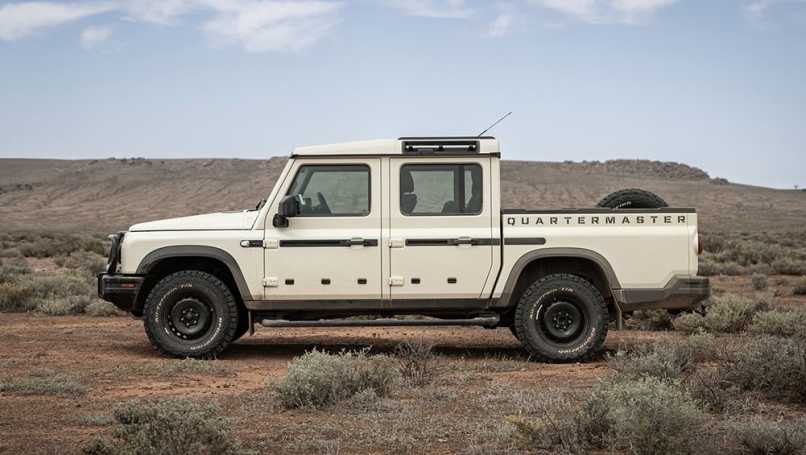
Luxury electric SUV gets its first facelift: 2025 Genesis GV60 scores minor design and tech upgrades to better compete with BMW iX1 and larger Porsche Macan electric
Hyundai’s luxury sub-brand Genesis has updated its dedicated electric...
Browse over 9,000 car reviews

Ineos Asia Pacific boss Justin Hocevar told CarsGuide how the Grenadier is tracking on the sales front and the moves the brand has made to remain niche, but not obscure.
“You look at competitors with what they do right and what they do wrong, and you carve your own path and your own strategy. We think we have a pretty good understanding of what the requirements are and who the customer is," he said.
“We’ve been out there with boots on the ground, we’ve been talking to that customer, and we’re ready to deal with hesitancy and rejection, and having that acute understanding of their needs.”
“What are the high points we can hit? What do we need to avoid? We know we have a good product, but it’s more than that, it’s how we go about network, how we approach parts, how we order our portfolio [dealer stock], how we work hard on LCT and tariff concessions to get orders across the line, and campaigning around a sensible approach to NVES [Australia’s new vehicle efficiency standard]. The sum of all those things give us the best fighting chance.” Hocevar explained.
Ineos has focused on capability for its Quartermaster ute. It falls slightly short of the desirable one tonne load rating with diesel variants able to carry 832kg and the petrol-powered ute able to carry 907kg, and it can fit a standard Euro-sized palette in the tray. Importantly, it can also tow 3500kg braked and punches above the usual four-cylinder ute crowd with its BMW-sourced 3.0-litre straight six engines in either petrol or diesel.

Its engines offer punchier performance than other notable recent vehicles such as the Mercedes-Benz X-Class, which was offered at a similar price-point, but its Nissan-sourced 2.3-litre four-cylinder engine didn't back it up. The Jeep Gladiator looks the part but is offered with only a big thirsty naturally-aspirated petrol engine.
A key part of Ineos’ Quartermaster ute offering is aftermarket support from day one, which includes a range of colour-matching trays from Australian outfit Norweld, to add to an array of factory options that range from a snorkel to a 5500kg winch kit that hides tidily behind the licence plate, as well as three locking differentials.
The Quartermaster’s $102,000 starting price (before on-road costs) is sure to keep it a niche offering compared to Australia’s popular glut of mainstream dual-cab utes, the brand already has a bigger presence than you might expect.

It doesn’t yet appear in the Federal Chamber of Automotive Industries sales report, but Hocevar confirmed the brand had managed in excess of 1500 units until the end of July this year.
This puts the off-road specialist within striking distance of some notable brands like Jeep, Peugeot and Cupra (all of which had moved between 1600 and 1900 units by the end of September). Hocevar noted these early numbers were likely due to pent-up demand prior to the Grenadier’s launch and the sweet spot for Ineos was likely closer to 2000 units a year, weighted more toward the Quartermaster than the SUV.
This makes Australia rank “third or fourth” in the world for Ineos volume, with Hocevar indicating that the brand “pushing toward 2500 units” in our market would start to put pressure on the factory in terms of production.

The dark post-COVID days of limited supply and long waiting lists are over, and despite a high level of customisability for its vehicles, Hocevar said the Hambach factory in France is capable of scaling up if need be.
“We can scale up out of Hambach, with the contract [with Smart] coming to a close, it does free up capacity and there are more ways we can scale up by managing shifts and these sorts of things.”
“We’ll stick with that plant for the foreseeable future. It has that proximity to Stuttgart (where the Grenadier is developed and engineered) and everything you need is in that part of Europe.”
The dual-cab ute market in Australia is set to be shaken up in the coming years, meaning Ineos won’t be playing with the same set of rules as previous unloved challengers the Gladiator and X-Class.
Kia has finally entered the Australian ute market with its controversially-styled Tasman, and BYD is further disrupting the segment with its competitively priced plug-in hybrid Shark 6. LDV and Isuzu will also bring electric utes to Australia for the first time in the near future, as they wrangle with NVES-imposed C02 limits on their diesel-heavy vehicle ranges.
Ineos will remain unscathed by the regulations, at least in the short-term thanks to its Euro 6 compliant BMW engines, but a new ADR requirement that mandates auto emergency look to necessitate a tech upgrade (which is already available in other markets) early next year.
Comments